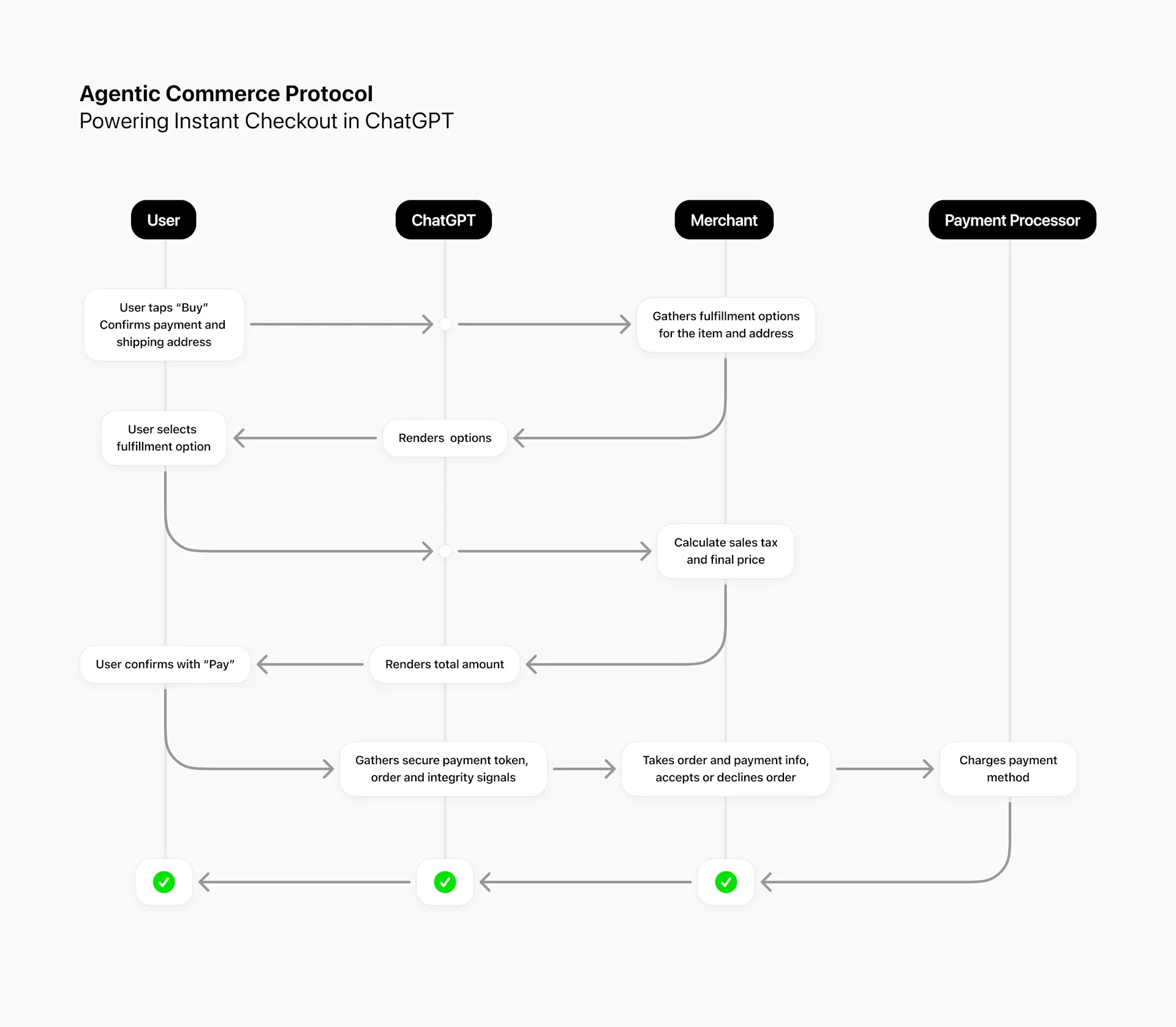The Agentic Commerce Protocol: Why Instant Checkout in ChatGPT is a Data Black Hole for Marketers
OpenAI’s introduction of 'Instant Checkout' in ChatGPT, powered by its new Agentic Commerce Protocol (built with Stripe), marks a significant step toward "agentic commerce." For the consumer, this is a dream: ask an AI for "the best running shoes under £100," and complete the purchase without ever leaving the chat interface.
We love a streamlined user journey. As digital strategists, we applaud any move that removes friction and makes conversions quicker. The ability to complete a transaction in just a few taps is the future of e-commerce convenience.
However, for e-commerce site owners and digital marketers, this convenience comes at a big cost: the loss of browsing data.
The Trade-Off: Efficiency vs. Insight
ChatGPTs agentic commerce model - powered by Stripe.
The agentic commerce model - where the AI acts as a digital personal shopper - is a potential data black hole for the merchant.
In a traditional e-commerce journey, a browsing user is highly valuable, even if they don't convert immediately. Every click, every product view, every minute spent on a page, is captured data. This rich interaction data allows you to:
Capture Interests for Targeting: Use behaviour data to retarget them later with relevant ads on social media or search.
Improve Personalisation: Inform product recommendations on the site or in subsequent emails.
Optimise Site Layouts: Understand where users drop off and what products they view, driving A/B testing and CRO efforts.
Grow the Email List: Opportunity to prompt for data capture (newsletters, loyalty sign-ups) during the browse phase.
When a transaction happens within ChatGPT via Instant Checkout, all those valuable browsing signals are lost to the merchant. The customer journey essentially becomes: AI Search → Instant Purchase Confirmation. The rich, behavioural journey is entirely contained within OpenAI's walled garden.
Who Owns the Customer Relationship?
While OpenAI states that the protocol is built to "keep merchants in control of the customer relationship," this claim is debatable. The merchant controls fulfilment, returns, and support, yes, but the AI now owns the entire discovery and decision-making part of the funnel.
For the marketer, the most crucial part of the customer relationship is understanding why they chose a product and what else they looked at. This loss of mid-funnel insight threatens a core strategy for e-commerce growth.
Adapt or Disappear
This shift reinforces the urgent need to prioritise owned channels and first-party data capture. If the transaction is destined to happen off-site, you must double down on the moments you do control:
Post-Purchase Data: Prioritise collecting behavioural data immediately after the sale (e.g., through thank-you page surveys or loyalty program sign-ups).
Product Feeds are SEO: Ensure your product feeds (the fuel for AI agents) are immaculate, descriptive, and accurately optimised. Your content must be perfect to win the agent's attention.
Build Direct Customer Engagement: Focus on newsletters, exclusive apps, and loyalty schemes that drive users to engage directly with your brand outside of any agentic interface.
Agentic commerce is the next frontier of e-commerce efficiency, but those who fail to adapt their data strategies will find themselves selling products through an efficient, but strategically opaque, black box.

